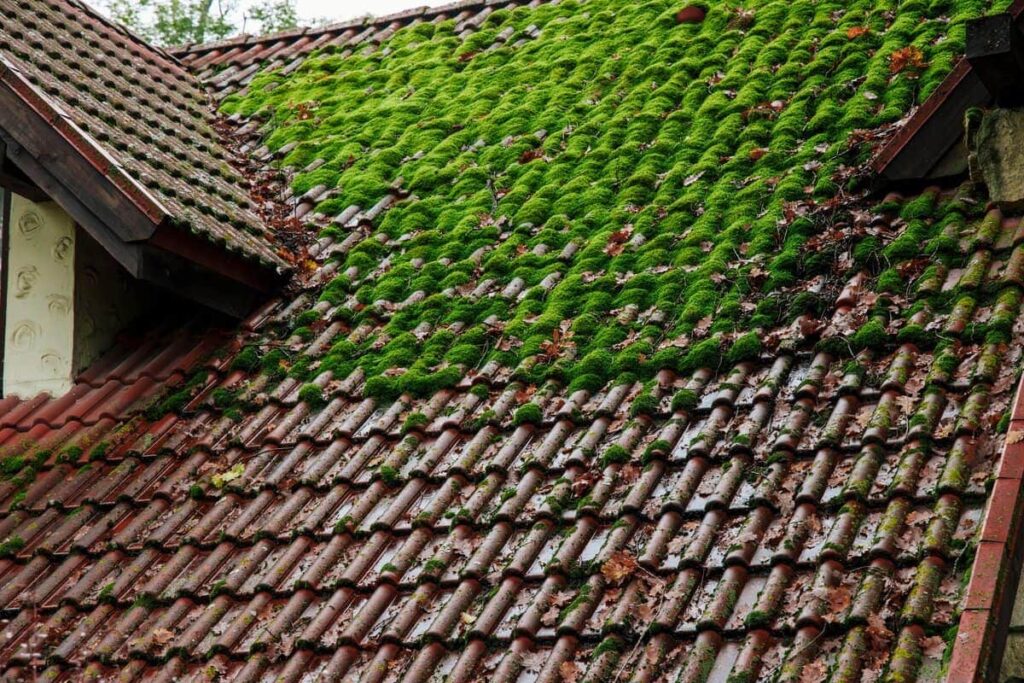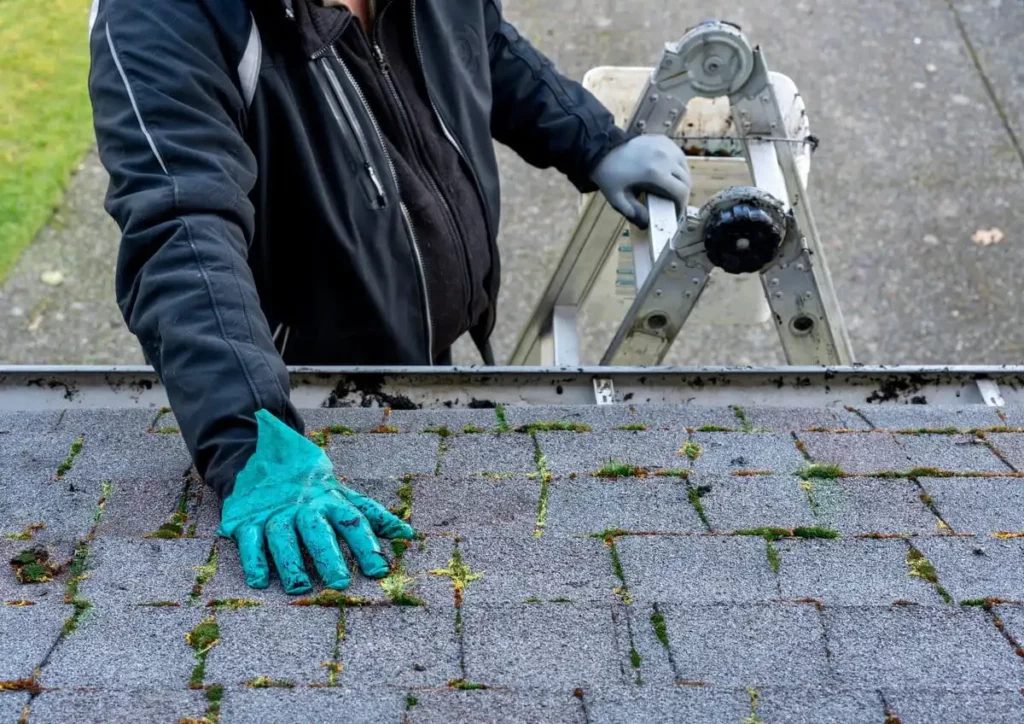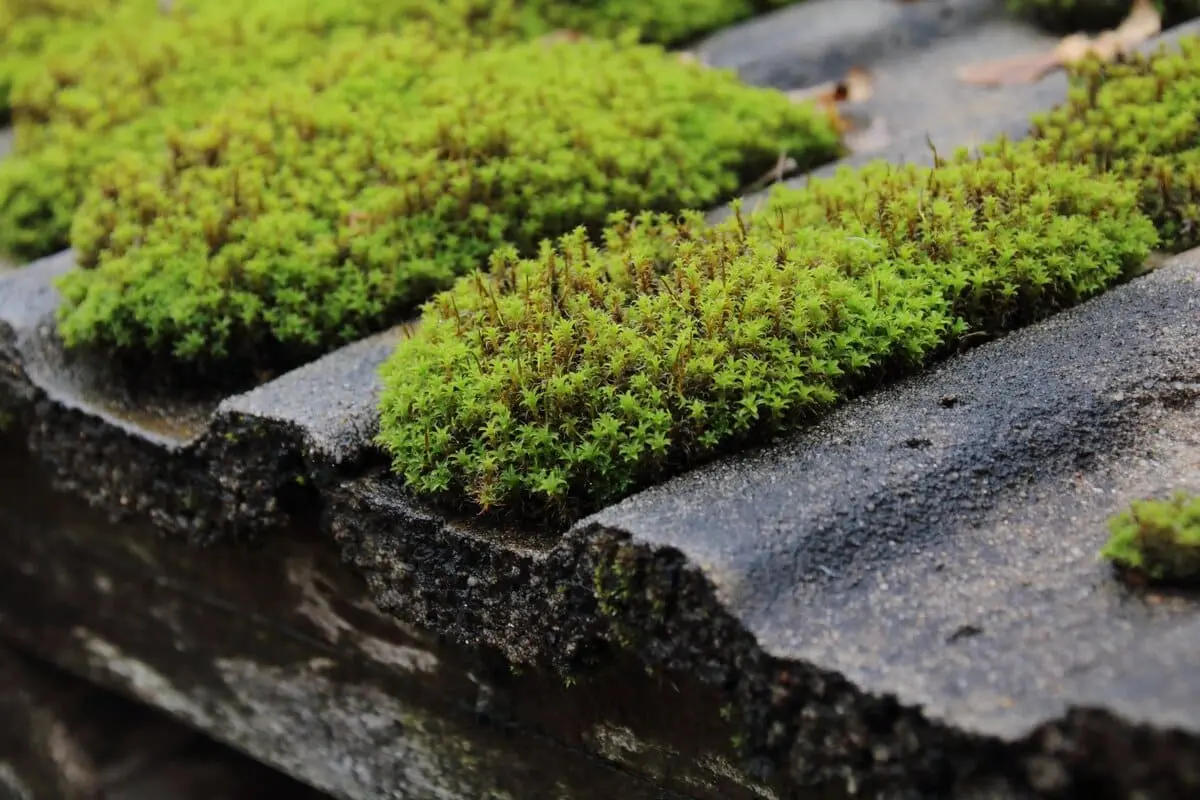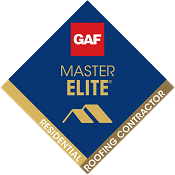Moss and algae growth on roofs is fairly common in areas of the country where humidity levels are high. Moss and algae are not only unsightly, but they also may be harmful to your roof as they can cause rot, damage shingles, and reduce the overall lifespan of your roof. To keep your roof in good condition, it is important to remove moss regularly.
How Does Moss Grow?
To understand how to best remove moss from your roof and keep it from returning, you need to understand what it is and how it grows.
Moss is a primitive land plant that attaches itself to surfaces and draws moisture from the air. It is a type of non-vascular plant without flowers and seeds, typically found in damp and shady environments growing in thin, low-to-the-ground clusters. Moss absorbs water directly from its surroundings and reproduces via spores instead of seeds.
Moss helps stabilize soils, capture nutrients, retain moisture, provide habitat for animals, and remove pollutants from water sources. However, moss on roofs causes problems because it prevents moisture from evaporating, which can lead to roof damage.
Moss spreads quickly in humid and wet conditions, as these are ideal for its growth and survival. Moss will usually start on the north side of your roof because it does not get as much sunlight, creating an optimal environment for moss growth. Likewise, roofs that are heavily shaded or near trees may also be more prone to moss growth because they tend to retain more moisture than roofs that get lots of sun exposure.

When and How to Get Rid of Moss on Roof Shingles
There is really no best time of year to remove moss from a roof, though it may be most effective at times when the moss is actively growing. This depends on the weather conditions in your area, but, in general, it is a good idea to remove moss as soon as possible, regardless of its growth cycle.
When you need to remove moss from your roof, you have a few options.
Pressure Washing
Pressure washing is sometimes used to clean roofs, and it can be quite effective. However, pressure washing comes with some significant drawbacks, including damage to the visible roofing materials that can lead to faster deterioration and the need for roof replacement sooner. As a result, many roofers do not see pressure washing as a preferred solution for how to fix moss on your roof.
Commercial Roof Cleaning Solutions
There are several different moss removers that are available through home supply stores and other retailers. If you choose one of these, be sure to follow the instructions carefully.
How to Remove Moss From Your Roof Naturally
There are several options for the best home remedy for moss on the roof.
One is to use a mixture of 1 part bleach to 5 parts water. (It may be tempting to consider a stronger bleach-to-water ratio, but you should understand that bleach dripping from the roof could damage or even kill landscaping plants near the house.)
Another alternative is to use undiluted vinegar, and yet another is powdered or liquid laundry detergent.
Once you have chosen an option you can gather the necessary tools and supplies:
- Bucket
- Spray bottle
- Garden hose connected to a water supply.
- Stiff, long-handled brush
- Gloves
- Protective eyewear
- Ladder

Before you even begin cleaning moss off of your roof, it is important to take necessary safety precautions. Remember, even professional roofers often get injured in falls from roofs.
- Make sure to wear appropriate shoes when climbing onto your roof, as the surface may be slippery.
- Thick rubber gloves, eyewear, and a breathing mask can help protect you from the cleaning solution.
- Use a sturdy ladder and place it in a level spot where it will not move.
- Ideally, you should always have a helper stay on the ground while you are on the roof.
Once you have gotten on the roof, the next step is to simply remove any existing growth of moss on the roof shingles. This can be done by using a stiff brush and your preferred solution.
Simply wet the affected area with plain water from the hose, then spray with the solution. The brush should be used gently so as not to damage the underlying material of the roof.
If this is not enough to remove the moss, you might find it helpful to just leave the bleach, vinegar, or detergent solution on the roof for a few hours or even days.
Once you have finished brushing off the remaining moss, rinse off any excess bleach with a hose. It is also a good idea to hose off nearby plants that might have gotten hit with the bleach mixture.
How to Prevent Moss on Your Roof
In addition to knowing how to fix moss on your roof, you should also know how to prevent it from coming back.
One way is by applying zinc strips at regular intervals along the peak of your roof – these strips will slowly release minerals into the air that will prevent further growth or spread of moss or algae spores.
You should also clear away any debris such as leaves or sticks that could provide a habitat for moss spores or moisture which could help them grow in unwanted places on your roof.
Finally, trimming back nearby trees and shrubs can help reduce shade build-up which could create an ideal environment for moss growth.
Roofing Services In Lakeland
If you live in central Florida and have questions about moss removal for your roof or any other roofing issues, contact Stronghold Roofing and Solar. Our team of experienced roofers can give you the advice and guidance you need to maintain your roof and maximize its lifespan.
We offer a full range of roofing services for homeowners and commercial property owners, from basic roof repairs to full roof replacement or installation. Take advantage of our roof financing options to help spread the cost of your project out over time.
Contact us today for free roof estimate!










